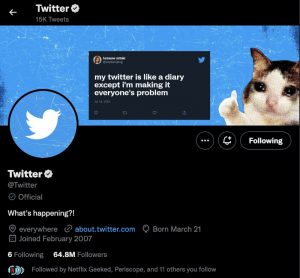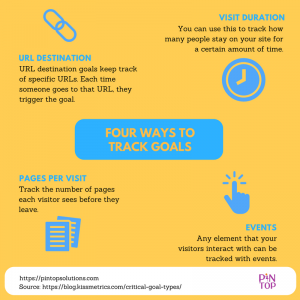 Long gone are the days of making your website stand out with background music, Flash images, and a hit counter at the bottom proudly telling someone they’re the 12,749th visitor to your site. People have become accustomed to finding what they want within seconds of a search query. If your site can’t engage visitors with an easy to follow navigational structure and user flow, well-written content, and a clear call to action you’re providing a poor user experience. Why does user experience matter? Because your website creates an instant and sometimes permanent brand impression and the last impression you want to make is one of frustration. Would you staff your store with incompetent employees, stage it with inaccurate signage, make it physically difficult to move from point A to point B, and then not even provide a cash register where someone could make a purchase? It might sound ridiculous, but that could be what you’re doing with your website without even realizing it.
Long gone are the days of making your website stand out with background music, Flash images, and a hit counter at the bottom proudly telling someone they’re the 12,749th visitor to your site. People have become accustomed to finding what they want within seconds of a search query. If your site can’t engage visitors with an easy to follow navigational structure and user flow, well-written content, and a clear call to action you’re providing a poor user experience. Why does user experience matter? Because your website creates an instant and sometimes permanent brand impression and the last impression you want to make is one of frustration. Would you staff your store with incompetent employees, stage it with inaccurate signage, make it physically difficult to move from point A to point B, and then not even provide a cash register where someone could make a purchase? It might sound ridiculous, but that could be what you’re doing with your website without even realizing it.
Provide a Full Mobile Experience
Today’s visitors expect more from their mobile and tablet experience so it’s essential that your website is built using responsive design. Responsive websites automatically adapt to a device size and orientation, providing a full website experience for all. It used to be that businesses had to invest in separate sites for mobile phones and tablets, which not only created an obvious expense but also frustrated users who would frequently have inconsistent experience. Today’s multi-device users will often start their interaction with your site on one device and later switch to another. Responsive design creates this user experience consistency and therefore creates a positive brand interaction and helps nurture their conversion experience.
Provide Engaging Content
Your visitors are coming to your site because they’re hoping you have what they need. That need could be an answer to a question, a desire to find a product they’re in need of, a login for a more personalized experience, or an article that will give them better insight and understanding of their world. Whether your site lives up to their expectation is up to you. While you can’t have the supply to every demand, you can make your site as content-rich as possible to ensure that you’re providing the best possible answers, goods, or information as needed. If you’re a financial institution with a great track record of providing an easy process for first time home buyers, you should have compelling text supporting that on your Mortgages page. Of course your site should present factual product information but resist the urge to provide them with paragraph upon paragraph of this information. Instead consider presenting key points in an easy-to-digest bulleted format followed by a clear explanation of your process. Complementing this could be a testimonial from a customer, a blog post written by a lending agent, and helpful tools for visitors like mortgage calculators and current rates. If a visitor gets to your site and can’t find information to back up your offerings, they’ll move on to someone else who does, regardless of whether or not they’re the better option.
Prioritize Ease of Use
Now that you’ve established that your site will have compelling content, you have to decide where to put it. If someone is truly engaged with your site, you may still only have their attention for less than two minutes. Your overall goal is to get visitors to easily navigate from the point of entry to the point of conversion. To do so requires an analysis of your business and marketing goals, while balancing visitors’ key goals. Like solving a puzzle, you will need to determine how your content can fit into logical buckets, how you can have scalability as your business grows and changes and how to present your most popular information and links prominently. “Mega menus” allow visitors to dig into deeper site levels without multiple clicks, and breadcrumb navigation is another user aid to facilitate site navigation. You will also want to be mindful of avoiding internal or trendy jargon when naming pages and instead rely on keyword research, site search data and good old fashioned common sense. Finally, once you’ve worked hard to get visitors to a page, make it immediately clear what you want them to do.
Clarify Point of Conversion
The best websites immediately guide the visitor to their desired action. Whether a conversion for your site means placing an order, opening an account, downloading a document, or submitting a form, the visitor should immediately know what to do and be able to see this action immediately when they load the page. Proper tracking of conversions allows you to update your site content and layout to drive an optimal number of conversions. If you have compelling content and no means of conversion, you’ve dropped the visitor out of the flow. They may convert at a later point by coming into a brick and mortar location or by calling a representative, but do you really want to risk losing them while you’ve got their attention?
Prioritizing Web User Experience
Most marketers work tirelessly to drive leads to their website. Once they arrive, it’s essential that the experience they get is a positive reflection of your brand and your commitment to making their lives easier. The sites that win the game provide a consistent experience no matter the visitor’s device, provide useful and engaging content, allow a visitor to find what they want quickly and allow them to fulfill their intent to convert.
Digital & Social Articles on Business 2 Community(56)








